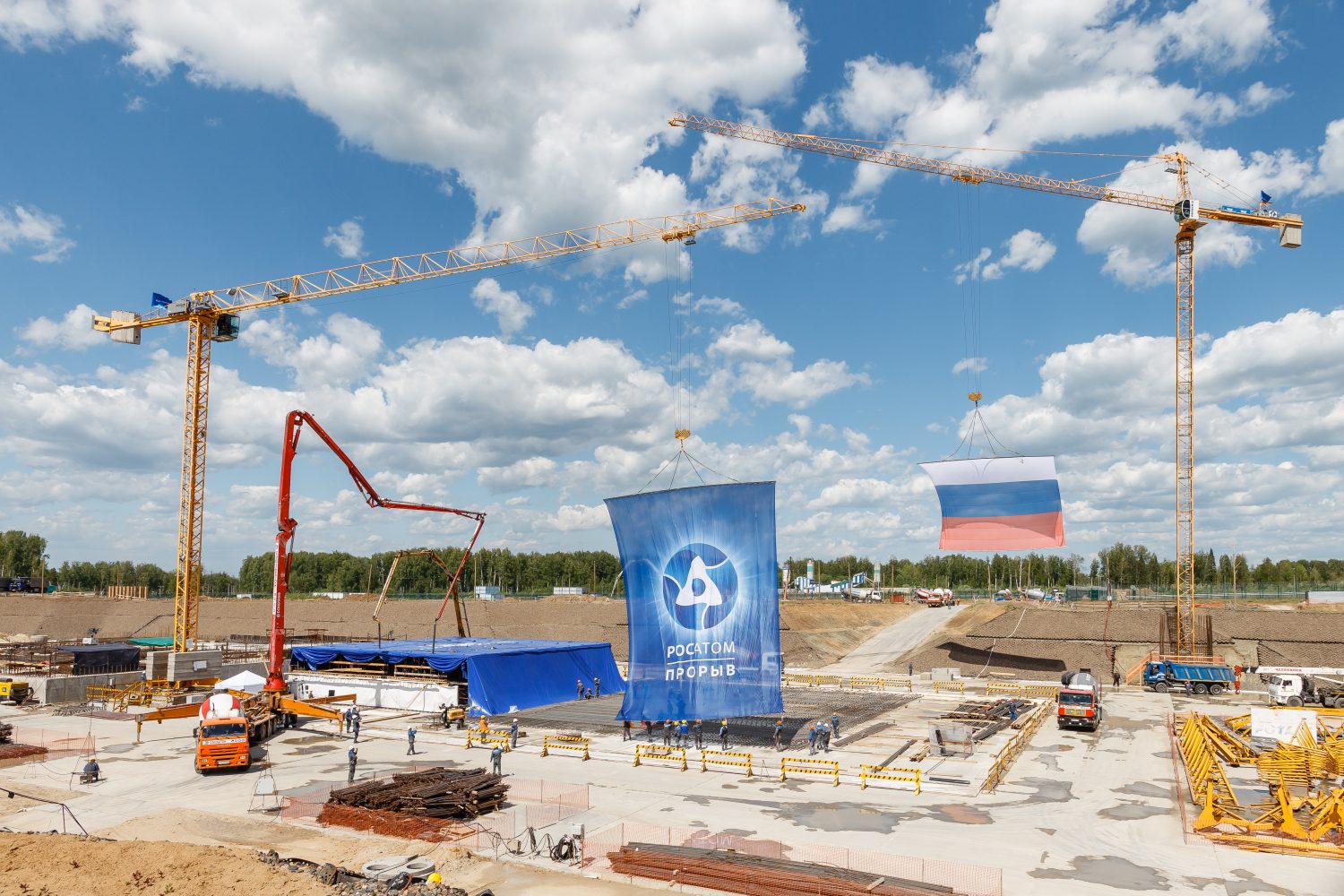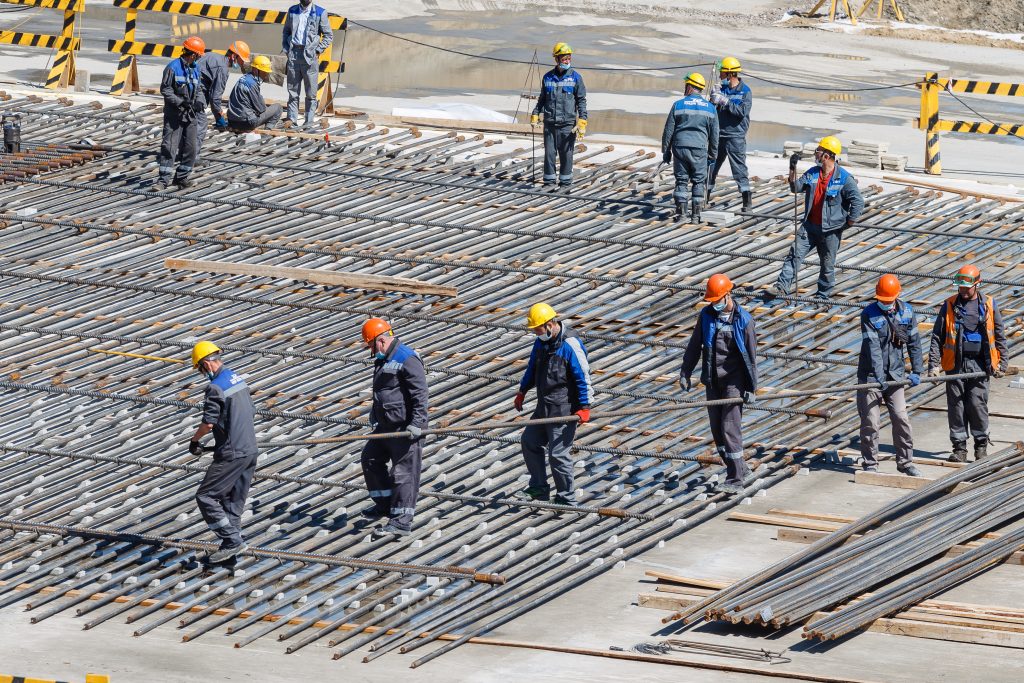
Rosatom: a Breakthrough
back to contentsConstruction of an unparalleled BREST-OD 300 reactor began in Seversk. This is the first Generation IV reactor unit designed in line with the inherent safety principles.
The event is truly of global significance. “As the construction of BREST began, Rosatom, Russia and the global nuclear industry have made a move forward,” IAEA Director General Rafael Grossi said via a video link at the first concrete ceremony.
“Each of us is part of a large team sharing the idea of creating here, in Seversk, something that has never been done before in the history of mankind and that the global nuclear community awaits — an operating nuclear reactor of the fourth generation,” Director General of Rosatom Alexey Likhachev echoed his colleagues’ comments.
BREST is the first of a kind in many aspects.
Safety
“The Proryv (Breakthrough) Project represents a new generation of nuclear fuel cycle technology,” TVEL President Natalia Nikipelova said at the ceremony. The reactor will use mixed uranium-plutonium nitride (MUPN) fuel. Unlike MOX (mixed oxide) fuel, it is denser and has a lower operating temperature and a higher thermal conductivity. Thanks to these properties, the coolant absorbs heat faster, preventing the fuel from overheating. It is assumed that MUPN fuel will be fully produced from recycled materials, plutonium and depleted uranium.
Lead coolant does not react chemically with either air or water, which are always present in a nuclear power plant. This is what helped improve the reactor and make it more compact and, consequently, more cost-effective as compared to other reactor designs and clean energy sources. What is more, the high melting/freezing temperature of lead makes a loss of coolant impossible — it will simply freeze. The high temperature of lead coolant enables a more even power distribution in the core and, as a result, a more equal temperature of fuel rods. “Over the years many, many countries tried to design and propose a lead-cooled fast reactor, but this is the first time that we see the realization of the lead-cooled fast reactor,” said happily Stefano Monti, Head of the Nuclear Power Technology Development Section at the IAEA, who was present at the ceremony.
Construction of our innovative BREST-OD-300 lead-cool fast reactor is underway. It will bring the concept of an on-site closed nuclear fuel cycle to fruition taking the industry to the next level pic.twitter.com/nl717xOCRZ
— Rosatom Global (@RosatomGlobal) June 18, 2021
The BREST design provides for the integration of the primary loop components into the reactor unit. As for the reactor pressure vessel, it is made of many layers of reinforced concrete and is capable of holding nuclear materials inside even in an accident.
Sustainability
What makes the BREST reactor truly special is that it is part of the Pilot Demonstration Energy Complex (PDEC), comprising also a fuel fabrication and refabrication unit and a recycling unit. One of the purposes which BREST will serve is to test technologies of the so-called closed nuclear fuel cycle. “The Proryv Project and BREST as its part embody the dream of our predecessors to ‘close’ the nuclear fuel cycle. I wish the project good luck. It can really bring us closer to the dawn of a new era. We are open to the bright future when nuclear energy will be used peacefully all over the world,” Alessandro Alemberti, Nuclear Science Development Manager at Ansaldo Nucleare (Italy), said in congratulation to his industry colleagues.
 “Fast reactors can help close the nuclear fuel cycle, optimize the use of natural uranium resources and reduce the amount of radioactive waste. And using lead as coolant simplifies the reactor technology and improves safety,” Prof. Toru Obara from the Tokyo Institute of Technology highlighted the benefits of fast neutron reactors.
“Fast reactors can help close the nuclear fuel cycle, optimize the use of natural uranium resources and reduce the amount of radioactive waste. And using lead as coolant simplifies the reactor technology and improves safety,” Prof. Toru Obara from the Tokyo Institute of Technology highlighted the benefits of fast neutron reactors.
Can Turgut, Design Engineer at ITER Project from Turkey, put an emphasis on waste reduction, “Locating fuel production and recycling facilities and a nuclear reactor on one site will reduce storage costs. The problem of ultimate disposal of nuclear wastes will be almost totally solved. The repeated use of nuclear fuel will meet long-term energy needs, which will produce a positive effect, both in terms of economy and environment, on the country and the entire world.”
Speaking at the ceremony, most representatives of the global nuclear community pointed out that nuclear prevents emissions and neutralizes negative effects on the environment.
Cost effectiveness
The BREST designers will also have to prove that lead-cooled reactors running on nitride fuel are cost-effective alongside being reliable and sustainable.
Rosatom has ambitious plans for lead-cooled reactors. According to Alexey Likhachev, the pilot reactor is a prototype for a large commercial power unit. “We will scale up the liquid metal fast reactor technology to deploy large commercial power units across the country. We hope the technology will also be exported,” Alexey Likhachev stressed. By the mid‑21st century, he says, the flagship product of the Russian nuclear corporation will be complex power units consisting of thermal neutron reactors, fast neutron reactors, and on-site facilities for the fabrication and refabrication of nuclear fuel.
We have commenced construction of the world's first experimental demonstration power unit featuring a lead-cooled fast neutron reactor BREST-OD-300. The 300 MWe unit will be the main facility of the Pilot Demonstration Energy Complex (PDEC), an on-site closed nuclear fuel cycle pic.twitter.com/c9QrL8uGxJ
— Rosatom Global (@RosatomGlobal) June 8, 2021
According to Evgeny Adamov, Science Director of Proryv, the action plan for the project is set for 18 years ahead, and the short-term prospects are clear. By 2023, a fuel fabrication facility will be put in operation. By 2024, construction of an irradiated fuel recycling facility is expected to begin. The BREST-OD‑300 reactor is scheduled to be commissioned in 2026.
TVEL is Rosatom’s fuel division and one of the world’s largest suppliers of nuclear fuel. TVEL is the monopoly supplier of nuclear fuel to all Russian NPPs, ship and research reactors of Russia. TVEL fuels nuclear power plants in 15 countries, or every sixth power reactor in the world.




